When it comes to heavy hauling, large end dump trailers stand as one of the most efficient solutions for various industries, including construction, mining, and waste management. Distinct for their high dump capability and versatility, these trailers are designed to move materials quickly and efficiently. But just how much can a large end dump trailer carry? In this comprehensive guide, we will explore various facets of end dump trailers, including their capacities, factors affecting load limits, and practical applications.
What is a Large End Dump Trailer?
A large end dump trailer is a specialized vehicle that utilizes a hydraulic system to lift its bed, allowing it to dump out its contents quickly. These trailers are primarily manufactured with high-strength materials to endure the heavy loads, making them ideal for transporting bulk materials like gravel, sand, demolition debris, and even scrap metal.
Components of an End Dump Trailer
| Component | Function |
|---|---|
| Trailer Frame | The base structure that supports the entire trailer. |
| Dump Body | The compartment that holds the cargo. |
| Hydraulic System | Facilitates the lifting and dumping mechanism. |
| Axles | Distributes weight, usually designed to handle heavy loads. |
| Tires | Provide traction and support for the loaded trailer. |
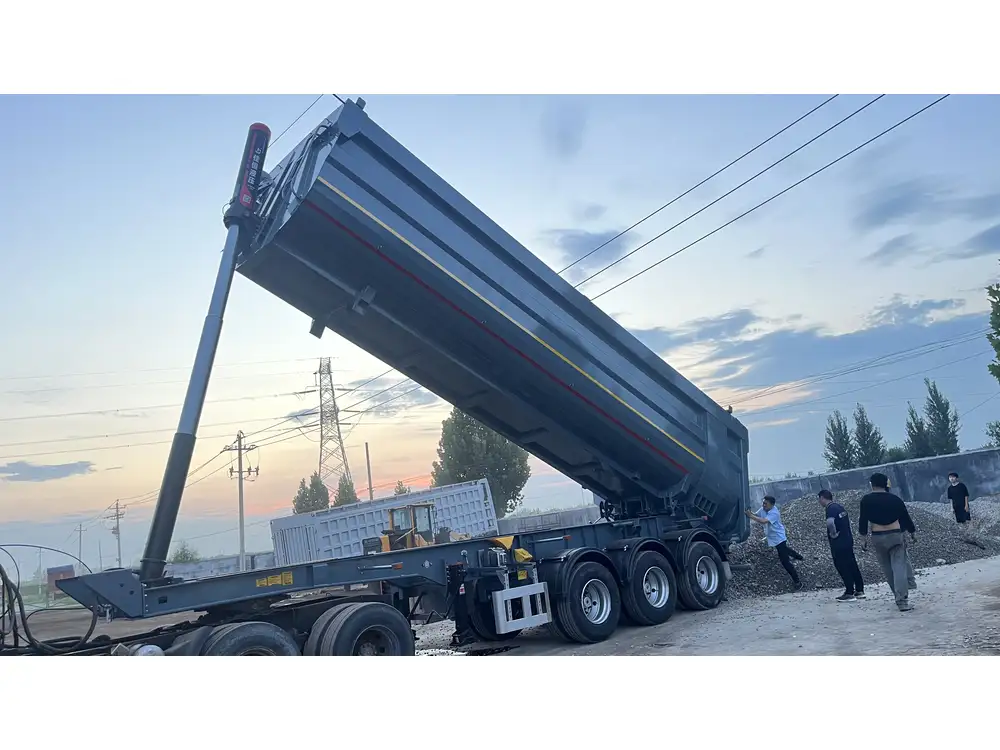
Capacity of Large End Dump Trailers
The load capacity of a large end dump trailer can vary significantly based on several factors, including design, construction materials, and intended use. Typically, large end dump trailers can carry between 14 to 24 tons (approximately 28,000 to 48,000 pounds) of material. Here’s a closer look at how these capacities are determined:
Common Specifications
Single Axle End Dump Trailers: This type usually has a maximum capacity ranging from 14,000 to 16,000 pounds. While they handle smaller loads, they are beneficial in locations with restricted space.
Tandem Axle End Dump Trailers: More versatile for larger jobs, these trailers can typically haul between 20,000 to 24,000 pounds. The additional axle provides better weight distribution and stability.
Tri-Axle End Dump Trailers: Designed for maximum capacity, these can carry hefty loads of 25,000 to 28,000 pounds. They are more stable under heavy conditions and provide superior traction and weight distribution.
Variability in Capacity
| Trailer Type | Typical Capacity (Tons) | Use Cases |
|---|---|---|
| Single Axle | 7 – 8 tons | Smaller jobs, tight space environments |
| Tandem Axle | 10 – 12 tons | Construction sites, bulk goods |
| Tri-Axle | 12.5 – 14 tons | Heavy-duty jobs, demolition debris |
| Custom Built | Up to 40 tons | Specific applications, large quantities |

Factors Influencing Capacity
Trailer Design: Custom designs can offer increased capacity but may require additional considerations regarding road regulations.
Material Composition: The weight of the materials being transported and the trailer’s construction materials can impact overall capability.
Regulatory Limits: Different regions have weight restrictions for trucks and trailers. For instance, the U.S. federal bridge formula restricts maximum allowable weight based on the number of axles and spacing.
Importance of Load Distribution
Proper load distribution is critical in maximizing the usefulness of a large end dump trailer while ensuring safety. Uneven loads can lead to trailer instability, increase wear and tear, and even result in accidents.
Tips for Optimal Load Management
- Even Distribution: Ensure that materials are evenly distributed across the dump body to maintain balance.
- Secure Loads: Use tarps and straps to prevent shifting during transport.
- Weight Check: Utilize scales when available to ensure you are within legal weight limits for your trailer type.
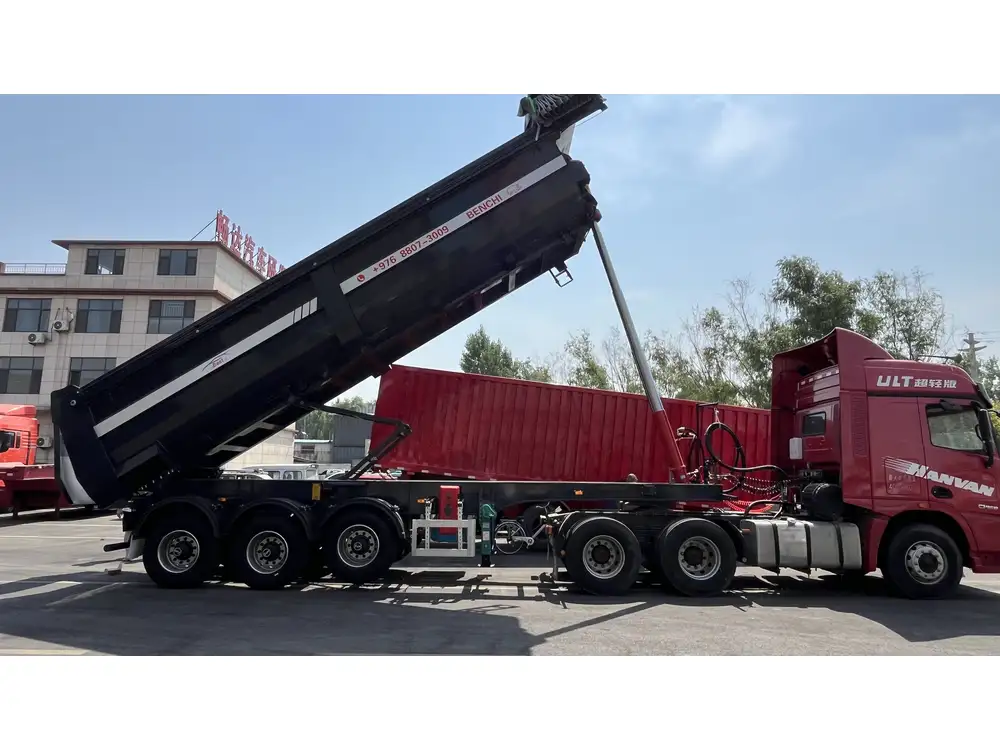
Applications of Large End Dump Trailers
Large end dump trailers are remarkably versatile and can be employed in numerous sectors. Here is a breakdown of the primary applications:
Construction
In the construction sector, these trailers are often employed to transport:
- Aggregate Materials: Such as sand, gravel, and stone for foundational work.
- Construction Debris: Efficiently disposing of excess materials like concrete and asphalt.
Mining
In mining operations, end dump trailers facilitate the movement of:
- Bulk Raw Materials: Including ore and rock.
- Coal and Minerals: Handling large volumes crucial for processing plants.
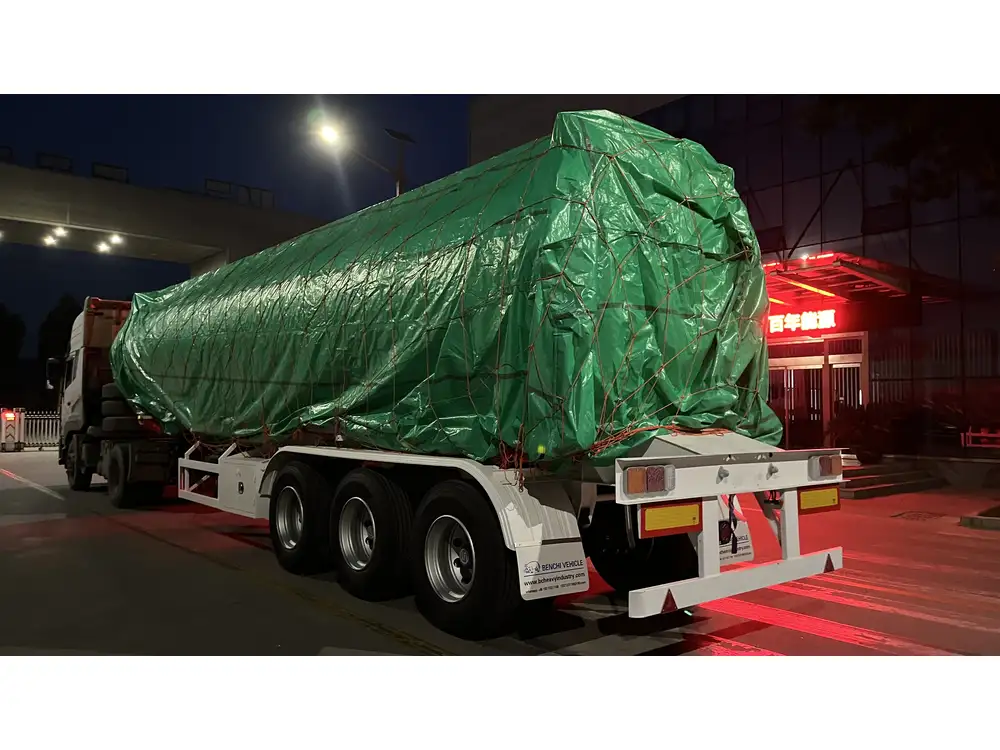
Waste Management
In waste management, end dump trailers are indispensable for transporting:
- Demolition Waste: Quickly removing debris from sites.
- Landfill Waste: Efficiently moving materials to designated landfills.
Advantages of Using Large End Dump Trailers
1. High Efficiency
With their ability to unload materials rapidly, large end dump trailers significantly improve workflow and productivity on job sites. The hydraulic mechanisms allow for quick dumping, thus saving time during operations.

2. Versatility
These trailers accommodate a variety of materials, making them suitable for numerous applications across different industries. Their adaptability ensures they remain an asset in any operation.
3. Durability
Manufactured with high-strength materials, large end dump trailers are built to withstand harsh conditions and heavy loads, promising longevity and reliability.
4. Safety Features
Modern end dump trailers come equipped with various safety features, including stabilizing legs, load indicators, and enhanced braking systems that minimize accident risks.
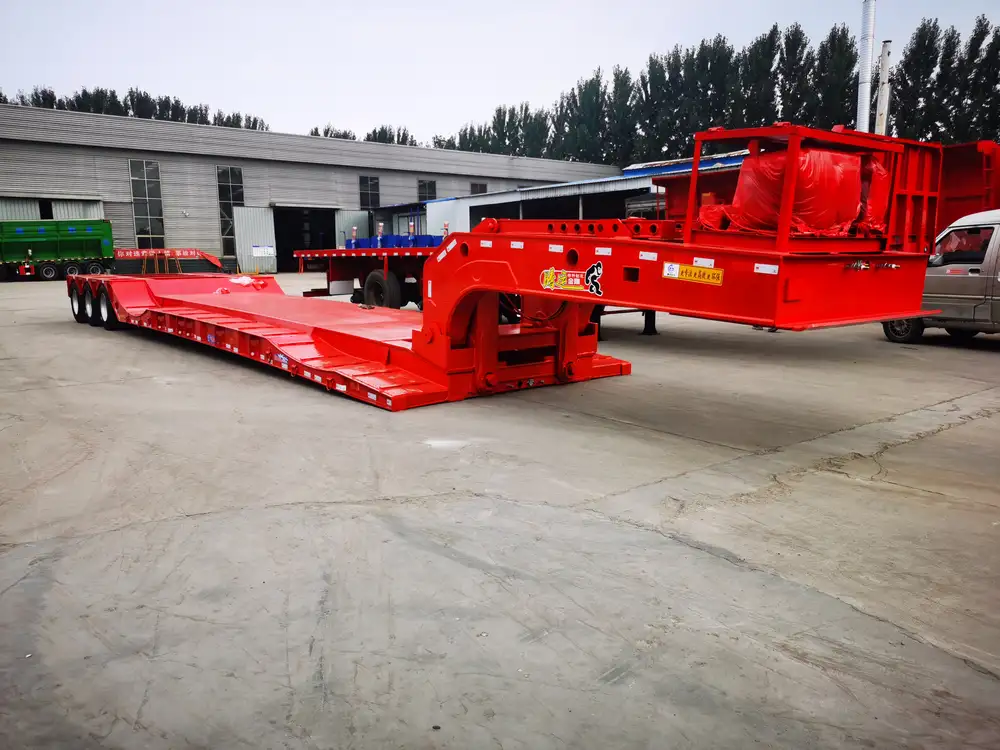
Challenges Involved in Using End Dump Trailers
Despite their advantages, operating large end dump trailers is not without challenges. Awareness of these issues can foster better preparation and operational efficiency.
1. Regulatory Compliance
Operators must ensure compliance with different state and local regulations, frequently subjecting weights and dimensions to strict controls. Understanding these regulations is vital for avoiding fines and maintaining safety standards.
2. Maintenance Requirements
Regular maintenance is critical. Components, such as hydraulic systems and tires, should be frequently checked and replaced as necessary to ensure safe operations.
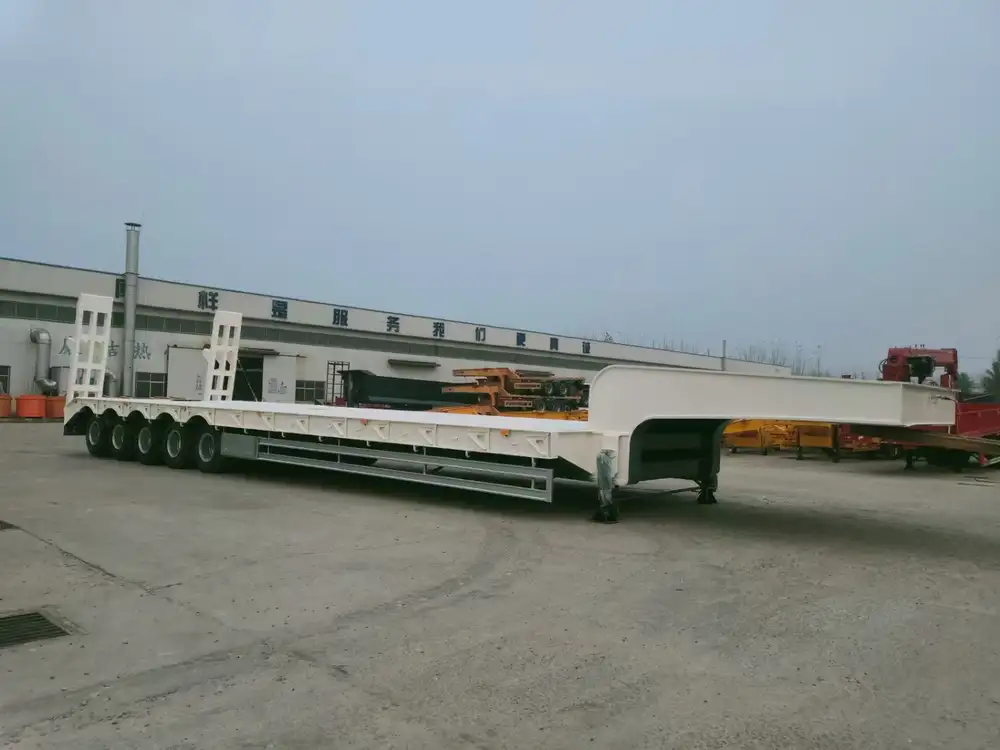
3. Learning Curve
For new operators, understanding the functionality of dump trailers—particularly the hydraulic systems—takes time and training. Proper training programs are essential for effective and safe operation.
Conclusion
Understanding how many tons a large end dump trailer can carry involves more than just the number on paper. It encapsulates learning about the specifications, the usage scenarios, and the inherent challenges that come with heavy hauling. By harnessing this knowledge, manufacturers and users alike can optimize their operations, enhance safety protocols, and ultimately achieve greater efficiency in their tasks.
In the landscape of logistics and transportation, large end dump trailers will continue to play a pivotal role, bridging the gap between raw material sources and the hands of builders and constructors. Therefore, whether you are in construction, mining, or waste management, ensuring you have the right trailer suited to your needs is crucial for your operational success.



